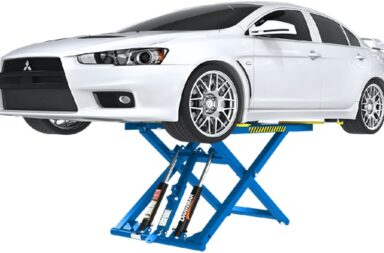We tend to think of cars back in the day being susceptible to rust, but don’t be fooled into thinking that modern cars are immune. In fact there can be a lot more hidden behind all the plastic trims than you would expect and many modern cars have fallen prey to MoT scrutiny and ended up on the scrapheap.
An easy and readily available option to protecting your car from rusting is to underseal it.
What Is Underseal?
Underseal is a tough wax that is designed to protect the areas of a car that you can’t normally see, such as the underside and wheel arches. Time has moved on since underseal products being like a thick paint, and products like Dinitrol, are more like a wax, that sets firm to the touch. It is designed to take a lot of abuse such as stone chipping and other debris that may hit the underside of your car. It also protects against salt and water. It is slightly flexible which is why it can absorb small pieces of debris hitting it without damaging the car.
When a car first comes off the factory floor it will have a layer of underseal, but over time this initial layer can become compromised and its effectiveness is reduced.
Why Use Underseal?
Cars are constantly under threat of damage that can lead to serious rust issues. Mud, water and salt from the roads can get trapped in the wheel arch and trims. Chips and debris that fly up and hit the underside of the car as you are driving. Even using a car jack can damage the coating under your car.
All of these things inevitably lead to the formation of rust and once rust has taken hold, if it is left untreated, it will spread. You may be able to patch up small areas to get it through the MoT, but to truly guarantee the removal of the rust, it is advisable to replace the panel that is affected. This can be quite costly and sometimes it isn’t worth it compared to the value of the car, which is why so many end up in the scrapyard.
According to Mark from car rust proofing company Preserve Protect said “Using underseal can be a good investment that helps to prolong the life of your car while cutting down on potentially big repair bills later on.” Especially if you live in a coastal area, drive on a lot of inferior quality roads or have been advised that you have corrosion already on your car. Even if your MoT test showed signs of corrosion, using underseal can prevent the problem from worsening.
Types Of Underseal
You can apply certain car underseals yourself, be warned it is a messy and smelly job. You will need to wear protective gloves, goggles and a face mask to protect yourself and make sure you have properly taped up the car to avoid overspray.
The first kind is bitumen, which is a material found in road surfacing. This is the least expensive option and is ok for older cars that you are not anticipating lasting much longer. It is fairly easy to apply as you simply spray it on. However, it is not easy to remove once it has been applied which is why you need to ensure that you tape off areas you don’t want covered in it. A thick coat of bitumen will give you a few years of protection but will inevitably crack and degrade over time.
You then have wax type underseals which are a little more expensive. The main advantage of this type of seal is that they can sort of self-heal if they get hit by debris, which means the shield keeps on working. As with the bitumen sealant though, they do wear off after a few years and certain activities can accelerate this, such as pressure washing.
The most effective and top of the range underseal treatments incorporate rust-converting chemicals and compounds that inhibit corrosion. These would normally be carried out by a professional but they have the benefit of being able to treat existing issues as well as preventing future problems. A good example of this type of underseal would be one that is used for the military vehicles such as Dinitrol.
In Conclusion
So is it worth using underseal? Well, in short yes, if you want your car to last. Certain cars are more susceptible to rust than others and certain driving conditions can intensify the issue. But all in all, if you want your car to serve you for a good number of years and not end up on the scrap heap, then why not add a layer of protection?


